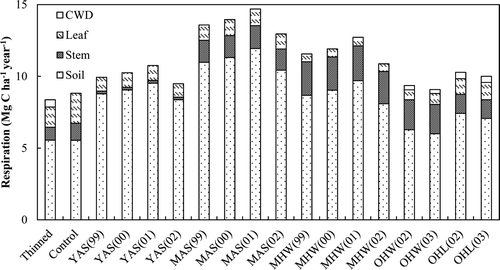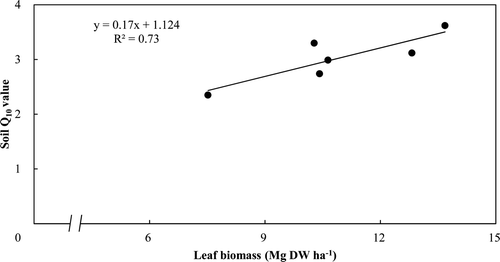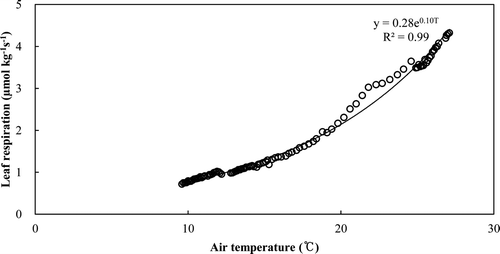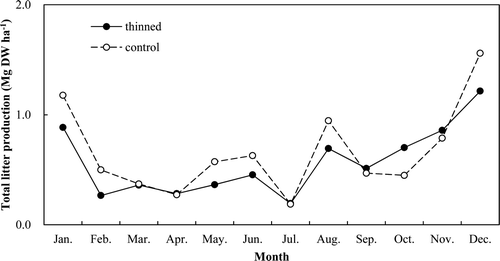Figures & data
Table 1. Stand characteristics in the thinned and control plots (n = 3).
Table 2. Parameters in the allometric equation (Equation (3)) used to plot the components biomass and sapwood volume against DBH.
Figure 2. Monthly variation of soil respiration rates (a), temperature (b), and volumetric water content (c) in the thinned and control stands (n = 18). Vertical bars indicate standard errors.
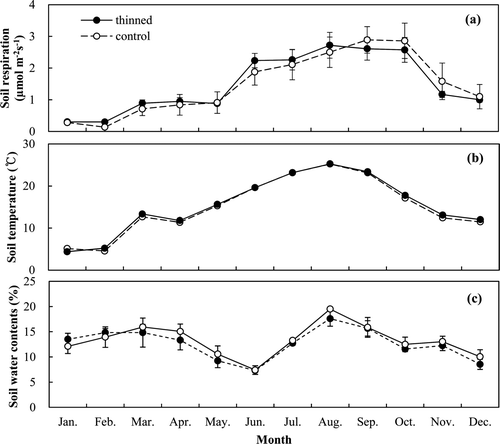
Figure 3. Relationship between soil respiration rates and soil temperature at 7 cm depth in the thinned and control stands.
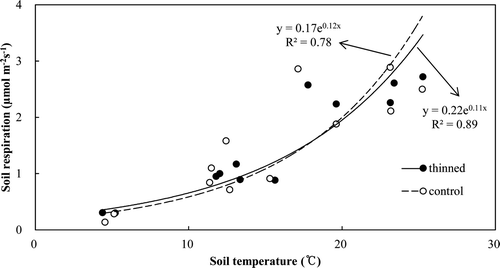
Table 3. Parameters in the exponential equation (Equation 1) used to determine the response of respiration components to temperature in the thinned and control stands.
Table 4. Estimated annual components and ecosystem respiration (Mg C ha−1 year−1) in the thinned and control stands (n = 3).
Figure 6. Monthly variation of stem respiration rates (a) and sapwood temperature (b) in the thinned and control stands (n = 18). Vertical bars indicate standard errors.
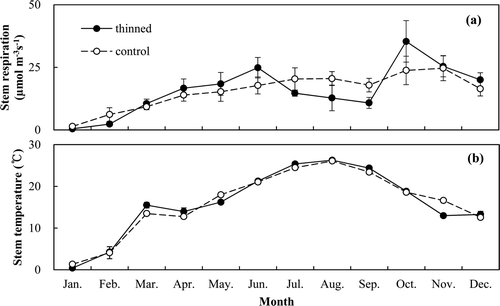
Figure 7. Relationship between stem respiration rates per sapwood volume and sapwood temperature in the thinned and control stands.
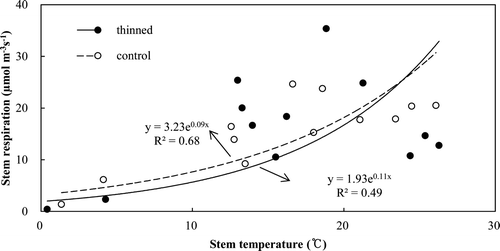
Table 5. Estimated sapwood volume, leaf biomass, and coarse woody debris (CWD) surface in the thinned and control stands (n = 3).
Figure 9. Monthly variation of coarse woody debris (CWD) respiration rates with temperature in the thinned stand. Vertical bars indicate standard errors.
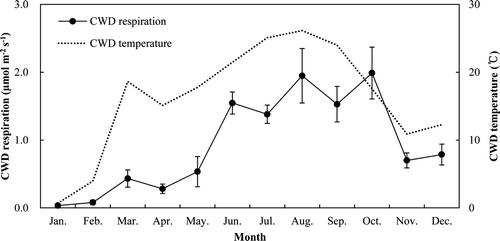
Figure 10. Monthly variation of ecosystem respiration rates in the thinned and control stands. Vertical bars indicate standard errors.

Table 6. Estimated annual litter production (Mg dw ha− 1 year− 1) in the thinned and control stands.
Figure 12. Monthly litter decomposition rates in the thinned and control stands. Vertical bars indicate standard errors.
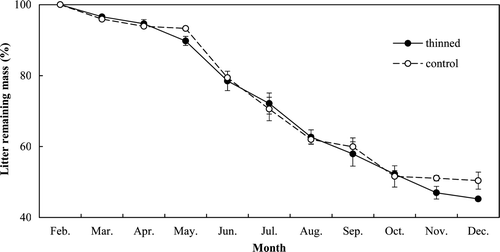
Figure 13. Soil, leaf, stem, and coarse woody debris (CWD) respiration of the young aspen (YAS), mature aspen (MAS), mature hardwood (MHW), old-growth hardwood (OHW), old-growth hemlock (OHL), and the thinned and control stands of this study. The values in parentheses are measurement years.
